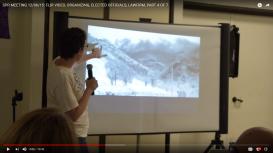Since the 1970s, activists have often assumed that pictures of environmental disaster would mobilize the public against ecological degradation. However, there are deep-set patterns of occlusion and political contestation surrounding such images. When does the volunteer cleaning an oil-soaked bird on the shores of Prince William Sound in 1989 impede our capacity to understand the ecology, regulations, or political economy of oil extraction and transport? What impact do the “ag-gag” laws seeded in the US during the 1990s (with the follow-on 2002 “Animal and Ecological Terrorism Act” and its progeny) have on the legal status of citizens’ imagery taken of industrial animal facilities? How did communities struggle, technically, to make visible the unseen methane plumes from the 2015 Aliso Canyon blowout, and what were the political-epistemic results of their efforts? Underwater, on the ground, and in the air, images proliferate; states and corporations attempt to control the visual narrative, even as activists and scientists rely on images as never before. Given the daunting literature on the Anthropocene, we tackle specific cases in which visual arguments were mustered, in order to offer some steps toward a theoretical understanding of how images have formed simultaneous regimes of obscurity and visibility in our times.

Communications Manager Hilary Lewis of Earthworks Action Organization, helping members of the Porter Ranch neighborhood in LA understand an infrared video image of leaking methane (December 5, 2015).
Project
(2018)
